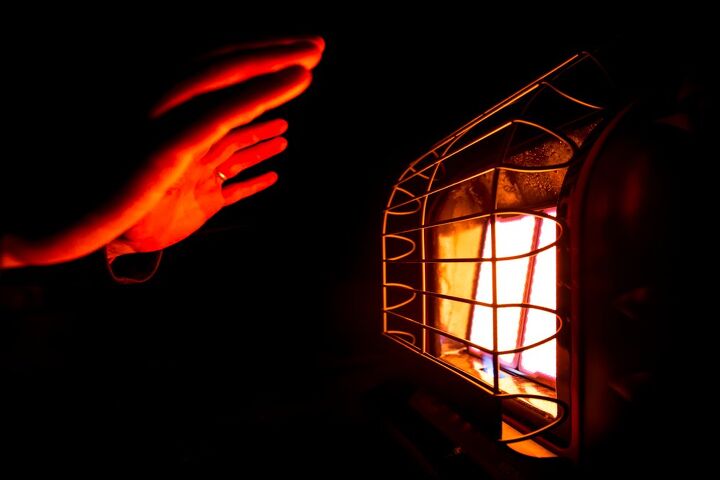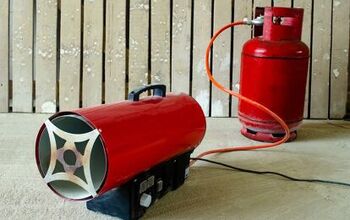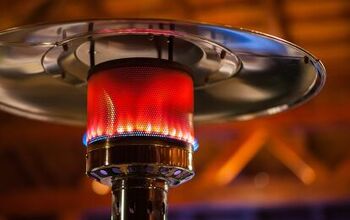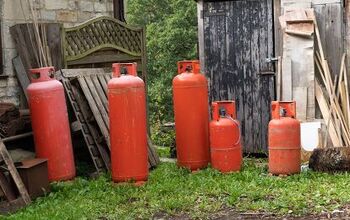Are Propane Heaters Safe Indoors? (Find Out Now!)

A quality propane heater can come in handy when you have a power outage, it can keep you warm on a camping trip, or provide supplemental heat when you have a dying furnace. However, like any appliance, it’s crucial that you use propane heaters safely.
This brings us to the question at hand – are propane heaters safe indoors? Proper heaters are perfectly safe to be used indoors, so long as you have an indoor model. There are two primary types of propane heaters: indoor and outdoor. These two models differ in terms of how they handle the smoke they produce.
With that said, let’s take a deeper look at the two main types of propane heaters and some general tips to ensure safe operation of your propane heater.
Are Propane Heaters Safe Indoors?
In short, some propane heaters are safe to be used indoors. As opposed to outdoor models, indoor models are specially designed to be safe for indoor use. Outdoor models, on the other hand, must be used outside or somewhere with sufficient ventilation, and a carbon monoxide detector.
Since indoor and outdoor propane heaters handle the smoke that they generate differently, it’s important to understand what type of propane heater you purchase for indoor purposes. If you use an outdoor-only propane heater anywhere without plenty of ventilation, this can cause carbon monoxide poisoning.
Indoor vs. Outdoor Propane Heaters
The main difference between indoor and outdoor propane heaters is how they release smoke. Burning fuel creates a ton of different byproducts, and this is certainly true for propane. Although it’s always best to avoid breathing in any fumes, there is one specific gas that can present serious health risks when present inside: carbon monoxide.
Propane Heaters & Carbon Monoxide
Although propane gas is an incredibly affordable and energy-efficient way to get hot water, generate power, and heat your living spaces, it can cost you your home, or possibly even your life, when improperly handled. Carbon monoxide (CO) is a major health concern, especially considering the fact that this gas is odorless, tasteless, and transparent. Not to mention, it takes a while to accumulate and can cause mental confusion.
Burning propane always creates carbon monoxide, but the gas is generally driven away naturally by air currents. For this reason, outdoor-only propane heaters do not need to do anything to release the carbon monoxide they generate. Ventilation will cause the carbon monoxide to dissipate before it can collect to a level that’s dangerous.
However, indoor propane heaters are designed to be used in enclosed spaces, meaning the carbon monoxide they create has nowhere to escape to (unless you opt for a vented indoor propane heater). For this reason, indoor propane heaters are outfitted with automatic shutoff switches. These switches are attached to oxygen depletion sensors (ODS), which turn the heater off immediately whenever not enough oxygen is detected in the room. This helps avoid a situation where the carbon monoxide reaches dangerous levels.
Some indoor models are also equipped with carbon monoxide detectors. The detector should be installed at least a few feet from the propane heater. By keeping the heater and the carbon monoxide disconnected, you will receive a more accurate reading of carbon monoxide in the entire space.
Indoor Propane Heater Options
Indoor propane heaters can also be broken down into a number of different models. Some of the options you have to choose from include, radiant propane indoor heaters, wall-mounted propane heaters, and forced air propane indoor heaters. However, the most crucial decision you make is how the heater will be vented.
Vented propane heaters are, as the name suggests, vented. These units vent out the back of the vent into a chimney or pipe. This venting directs any combustion exhaust, including carbon monoxide, outdoors. Vent-free, or ventless, heaters are designed to provide heat to single rooms and are very energy efficient.
However, since they don’t have a chimney, they can deplete oxygen in the space they are installed. This is why it’s so important that you choose a vent-free indoor heater that is equipped with an ODS. The ODS will sense if the oxygen levels are unsafe and then instantaneously cut off the flow of propane to the burner.
Generally speaking, vent-free propane heaters should only be used for supplemental use. Never use these types of heaters in bathrooms, bedrooms, or other confined spaces. Always provide the necessary ventilation, as indicated in the owner’s manual.
Propane Heater Safety Tips
When used properly, indoor propane heaters are perfectly safe. The following are some crucial tips to ensure that you’re operating your propane heater inside safely.
1. Check for leaks regularly.
Properly maintaining your propane heater will ensure that it continues operating perfectly for many years to come. First, you should always keep the heater clean and dust-free. You can use your vacuum cleaner’s hose attachment to clean up the dust that collects outside of the heater and on its’ grilles.
You should also check the system often for leaks. To check for leaks, inspect all of the hoses and connections for faulty seals, cracks, or anything else gas could escape through. If you’re unsure, try the following trick to check your indoor propane heater for leaks:
- Mix together some water and a mild soap.
- Wipe the mixture on any parts of the heater that you suspect may have a leak.
- Turn on the heater.
- If there is a leak, the soap will bubble where the gas is escaping.
Once you are aware of a leak, you can replace the component, patch the leak, or call out a technician to repair it accordingly.
Note: Fortunately, propane manufacturers add a stinky odor to the gas. That way, it’s easy to detect when there is a leak.
2. Store and move the heater properly.
Proper propane heater maintenance also involves caring for the device when it’s not in use. For starters, most heaters should only be stored or moved in an upright position. Storing them at an angle or tipping them on their side can jerk internal connections loose.
You should also never move portable indoor propane space heaters while they’re on. If you need to move it, make sure it’s turned off first. Then, wait until the heater has cooled before moving it. Whenever the heater isn’t in use, you should also disconnect any fuel sources and connections.
3. Install carbon monoxide detectors.
One of the first things you should do before you set up your indoor propane heater for use is to get a carbon monoxide detector in your home, or the space you intend to use the heater. These heaters are excellent at monitoring carbon monoxide levels for you. If they ever even get close to a level you should be worried about, the carbon monoxide detector will alert you in a similar way as a smoke detector.
Carbon monoxide detectors give you peace of mind knowing that if something does go awry, you will be made aware of it.
4. Never leave the heater unattended.
Using an indoor propane heater safely means never leaving it unattended, under any circumstances. It’s very easy for a child or pet to knock over the heater when no one is watching. Instead, always stay in the vicinity whenever the heater is on. Make sure that you always turn the heater off if you leave the room and don’t leave it on while you’re sleeping.
5. Monitor the flame.
If your indoor propane heater ever has an orange or yellow flame instead of a blue one, turn it off immediately. Yellow, orange, or sooty flames indicate that incomplete combustion is occurring. This can lead to carbon monoxide buildup in your home. Contact your local propane provider or propane appliance technician to have someone come out to look at it right away.
6. Position the heater safely.
When in use, your indoor propane heater should be placed on a non-combustible surface away from where people pass by so there is no chance of it getting knocked over. It should also be safely positioned away from any combustible materials, like curtains, furniture, towels, linens, bedding, and curtains. If you have a wall-mounted indoor propane heater, make sure that the wall material is non-combustible.
Additionally, never use your propane heater as a table. This means that you should never put anything on it. Your propane heater is also not a dryer, so do not use it to dry your clothing.
7. Choose a heater with a tip-over safety switch.
One of the biggest risks with indoor heaters is the risk of it tipping over. Although carbon monoxide can be easy to vent, if your heater tips over and continues to run, you risk causing a fire. For this reason, make sure that you choose an indoor propane heater that is outfitted with a tip-over safety switch.
This switch shuts off the heater immediately if it is no longer placed on a solid, level base. So, if the heater tips over, it turns off, which prevents any possible chance of a fire starting.

Jessica considers herself a home improvement and design enthusiast. She grew up surrounded by constant home improvement projects and owes most of what she knows to helping her dad renovate her childhood home. Being a Los Angeles resident, Jessica spends a lot of her time looking for her next DIY project and sharing her love for home design.
More by Jessica Stone



























